
Public Site
| Members only: Restricted Docs Membership Biographies Your Account Your Flights Mailing Lists Badges Board Notes CrossCountry Instructors Logsheets Students Tracking Admin |
Skyline Soaring Club in the Twentieth Century
By Jim Kellett, January, 2000
Chapter III -- Warrenton Soaring Center
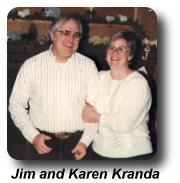
While I was gone on a sabbatical in 1973-4, CASS owner Gordon Bogora tragically died at his own hand. A group of investors soon stepped up and purchased the assets of the company, and WSC was formally incorporated in August 13, 1974. The initial Board consisted of Henry E. Otten, Kenneth Quinlan, James Kranda, Richard Ault, Ronald Miller, Frank Gallegos, Charles Beatley, Harvey Paige, and Richard Secord (the Richard Secord of Watergate fame). These people financed the startup of the new company out of their own pockets, plus some significant debt through commercial loans. The first President was Harvey Paige; Secretary was Richard Secord, and Henry Otten served as Treasurer.
Jim Kranda was the prime mover at WSC, serving as the President of the Corporation for most of its life. Jim and Karen lived just across the road from the airport in Warrenton – both had government jobs, his in Washington and hers in Bethesda, so for years they had a major commute. Jim was also a towpilot, CFI(G), and a DPE. Karen was the company's administrative backbone, first as girlfriend and later as wife.
The trail of owners Company included some other interesting people. By 1977, Gallegos, Secord, Miller, and Quinlan were gone and one Marine Col. (now General) Charles Pittman was a stockholder/Director. Chuck Pittman was the Marine officer who led the ground forces in the ill-fated attempted rescue of the Iranian hostages. 1979 saw the addition of Dick Edge to this group.
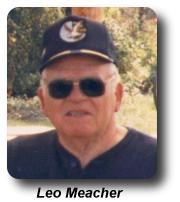
Leo Meacher, the first customer at the Warrenton Soaring Center, was a retired Navy airman with an impressive WWII combat flying record. He had made several hundred (!) combat carrier landings, and had been involved in many of the historical battles in the South Pacific, including the Battle of the Coral Sea, and was awarded the Navy's highest medal, the Distinguished Flying Cross. When he passed away he was interred with full military honors (including a Navy 'missing man' fly-over) at Arlington National Cemetery.
Leo was one of the major contributors to both Warrenton and the early Skyline years. Both Leo and his wife Linda [Lawrence] were towpilots and CFIs. Leo ran the weekday operation at Warrenton in its closing years, and was later primarily responsible for developing the move to 8W2 (New Market Airport) in 1991. He retired to Placitas, NM.
By 1980, the Directors were Jim and Karen Kranda, Charles Beatley, Joe ("Dick") Edge, Harvey Paige, Taylor Hines, Phillip Mouser, and Don Robb (now the owner/manager of the highly successful flight school, Av-Ed, operating out of Leesburg Muni). Don Robb was also an active member of M-ASA.
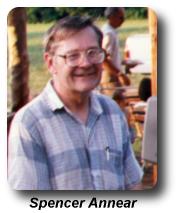
Spencer Annear became a tow pilot at WSC in November of 1979 and an instructor there in October of 1980, marking the first participation by an individual who would remain involved throughout the entire transition from WSC to Skyline Soaring Club. In 1983, he (and Richard Matsko) became stockholders-Directors. In 1987 he became Treasurer of the Corporation. (I bought into the Company in 1986, and shortly thereafter served as Secretary.)
Later, as one of the Club's founding members, he is properly credited with being the architect of the Club's unique organization and its shepherd during his six year Presidency. His outstanding service to the Club was recognized at the 1998 Annual Meeting with the Club's first (and only) Outstanding Service Award and plaque. Spencer is now inactive in the Club, living in Alexandria, VA, and flying floatplanes.
It bears noting that WSC was a company that acted a lot like a Club from the very beginning. Most of the stockholders were also members of the Board of Directors (others were spouses anyhow)! That made for some interesting Board meetings, to say the least. Even when I bought into the company in 1986, there were still long, passionate discussions of just that the purposes of the Company were. The perceptions of the stockholders ran the gamut from a commercial enterprise expected to provide a return on investment to the stockholders to a legal way to have others pay for the stockholders and directors' own recreational flying. In my opinion, this was never satisfactorily resolved, and the failure to achieve either objective was one factor contributing the burnout of the owners and the company's eventual failure.
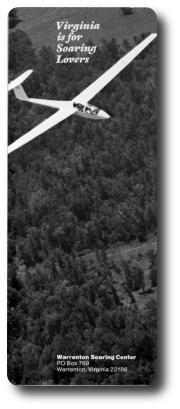
Phil Jordan is a graphic artist that, for a while, did the layout work for Air and Space Magazine. He was a major player in the design of US Postage Stamps. Phil and I, with Phil's son as photographer, were the subjects of one of the Company's informational brochure. We were flying the K-21 on the cover, and Phil's son, in the back seat of the Company's PA-18 towplane, took the pictures.
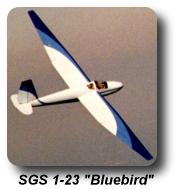
I had sold my 1-26 just before taking off on a Sabbatical in 1973, and bought a 1-23H when I came back in 1974. It was kept at Warrenton. Later, I leased out the ship to several people who earned their early badges in it (e.g., Jim Garrison). I earned my Gold distance and Diamond altitude in this ship - N10388. I painted it three shades of blue, using an original design by Scott Callander (an artist who flew with us) that was very striking. For obvious reasons, it was nicknamed Bluebird. Peter McLean now flies it at the Mohawk Valley Soaring Club in Connecticut.
The National Capitol Soaring Association flew a Blanik at Warrenton. Shane Neitzey was also very active in that club, flying the Blanik a great deal until it, too, was seriously damaged in an accident, signaling the demise of still another Club.
Charlie Schwenker started soaring in 1975, and became a CFI(G) and later, in 1984, a Director of the Company. He is shown here in his LS-1f, one of the first glass gliders to operate at WSC. Charlie Flew a Pitt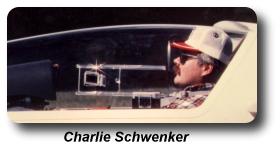 s and later an Extra out of Culpeper for some time, and was a frequent aerbatic pilot at the Flying Circus airshow venue in Bealeton. He also won several acrobatic contests before he (and his wing-walking partner, Jane Wicker) in June, 2013 while flying in an airshow in Dayton.
s and later an Extra out of Culpeper for some time, and was a frequent aerbatic pilot at the Flying Circus airshow venue in Bealeton. He also won several acrobatic contests before he (and his wing-walking partner, Jane Wicker) in June, 2013 while flying in an airshow in Dayton.
Charlie Schwenker remembered Harvey Paige's t-shirt - "Lose Not Thine Airspeed, Lest the Ground Rise Up and Smite Thee". Harvey was a docent at the Air & Space museum, and would say things like "when I first flew in a Ford Tri-motor like that one, I was only ?? years old ..." I'm sure Air & Space was happy to have someone who grew up with the airplanes that are on display. He and his wife later moved to the San Juan Islands in the Pacific northwest.
In 1974, the Warrenton Soaring Center at Warrenton Air Park had a canvas awning 'office' set up right next to the fence along Route 619. rom the parking lot, customers had to cross the active runway to get to the 'office'. The office trailer showed up about 1976. In the winter, we would take that office trailer to Front Royal and Orange while the Airpark was too wet to fly. The wooden lean-to that was constructed over the trailer many years later was mostly because the trailer leaked, and partly to give some shade.
The Soaring Center was a Schweizer dealer, which helped on buying parts and planes. Typically, the company would buy the minimum aircraft from Schweizer required to maintain its dealership status, and then sell off one or more of those in service to others. In 1975 or thereabouts, the company sold a 2-33, 1-26, and a Citabria to Skyline Aviation, a commercial operation owned by Charles Brown (currently the Chairman of the Warren County – Front Royal Airport Commission) and Wayne "Speedy" Lloyd, in Winchester, VA. Skyline operated a glider program for a couple of years; it's not known what happened to the equipment when they ceased glider operations. Charlie was a CFI(G) and a DPE. It was during this time, in Winchester, that Spencer Annear, the Club's second president, earned his glider ratings, and was examined for his CPL(G) by Charles Brown!
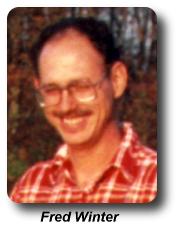
In the mid-seventies, two groups of WSC clients got together and purchased ASK-21s. There were some really incredible tax breaks at that time, allowing owners of leased aircraft to depreciate them in just a few years. One group, that bought N774KS, included myself, Cecil Arnold (who also owned a 1-26), Gary Quinn, and Judy Silverman. The second group purchased N341KS – the one that Skyline still flies – and was comprised of Fred Winter, Bob Neff, and myself. (By the way, the "KS" in the tail numbers of these planes stands for "Karl Streideick" who was at that time the Schleicher dealer in the US.) These two planes made a huge difference in the way the Company operated, and soon became the favorites of both instructors and customers. With the end of the tax write off period, one group (N774KS) sold their plane to California City Soaring and I sold my share of N341KS to Fred and Bob.
Fred Winter is one of the often unsung heroes of the Club. He learned to fly with the CAP (in power) as a kid. With his partner Bob Neff, he had leased his ASK-21 (N341KS) to WSC. When the Club was formed, they both became founding members, and Fred has taken the lead in maintaining the aircraft almost single-handedly. His selfless and generous support over the years has been a critical factor in the Club's continued success, and is one not fully appreciated by the newer members. In real life, Fred is the technical master at CBS news. He has some neat behind-the-scenes stories to tell!
Tows were done with 150 hp PA-18 Super Cubs and Leo Meacher's Citabria (also owned by Carroll Rands). Later we put a 180 hp engine on a Cub, and later still bought the two Pawnees. On the hot days, everyone wanted the latest, greatest, highest horsepower tow plane - Even if it was only a 1-26 needing a tow. Wasn't a bad idea, though, given the trees around the approaches!
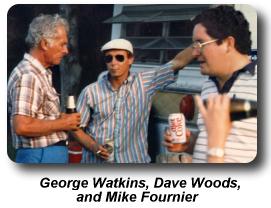
Some of the major supporters at WSC that aren't active in soaring around here now include Dave Woods, in the center of this picture. For a while, Dave was a very active ASW-19 pilot, and was a regular ground manager for the Company. He went to California to work with the late George Watkins (left) for a while at Crystal Soaring, after George and his wife Monica bought the Gliderport at Warner Springs, CA. The guy on the right in this picture is Mike Fournier, a corporate pilot and a regular towpilot for the Company. (Mike was a towpilot for Skyline until health problems precluded his flying.)
George Watkins retired as a navy Commander. He was the first naval aviator to make 1,000 carrier landings and was for along time the navy's "master bagger," the pilot with the most carrier traps, a big deal among the boat people. Leo Meacher was "Gorgeous George"'s first squadron commander! When George came on board the carrier, Leo took one look at his vainglorious head of hair and said, "get a haircut!"
Richard 'Old Dog' Wolters stopped by one day – Just visiting. We normally sold his books, but I couldn't find one of them in the trailer for him to sign that day.
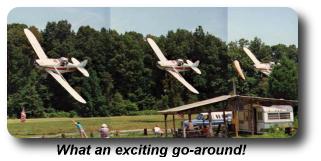
Here's how to NOT do a pattern! The Company's towplane (our very own 66) is shown breaking off an approach to land to the west by turning left onto the SW runway at the intersection! You can see a 1-26 that was blocking the runway in the last picture . . . also the people at the office who are understandably excited!! Charlie Lee took this interesting sequence of pictures.
The airport had two runways running roughly SW-NE and E-W. Each was a little over 2,000 feet long; the SW-NE runway terminated in about the middle of the E-W runway, and it was common practice to land to the west, stop in time to be in position to launch to the SW. But the intersection was close to 100' lower than the opposite threshold, and the E-W runway was entirely surrounded by trees. Warrenton Airpark was (and is) a challenging airport, to put it mildly. Over the ca. 15 years WSC operated there, several aircraft were destroyed and several pilots suffered injuries, some serious, and with two fatalities. I personally believe that the airport became increasingly unsuitable for gliders over the years as the trees on and around the facility grew and as the continued failure to get hangars constructed led to increasing maintenance costs for the company.
Derek Piggott was here for the SSA convention, and flew at Warrenton with some of the staff & customers – and with typical British reserve, called it a "difficult place to land."
There were more than a few "kids" that worked their way to their first pilot's license at WSC, with or without a lot of aid from the McClain Foundation. They worked for credits as go-fers. They include:
- Matthew Jones, started as a line boy in 1988 at age 14 and started flying gliders then. He got hired by Continental Express when still 21 and made Captain on his 23rd birthday in the EMB-120. At the time he was the youngest airline captain in the country. He upgraded to captain on the EMB-145 Regional Jet at 24 and at that time was the youngest jet captain in the country. At 25 he is a check captain on both the EMB-135 and 145. (Matthew's dad, retired AF pilot Bill Jones, was for a while chief glider instructor at the University of Illinois and assistant director of that school's flight Program – and Bill got his first glider ride from none other than WSC's Ernest Klimonda !)
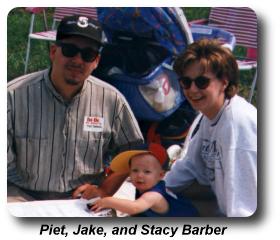
- Piet Barber used to have his Mom drive him to the airport, because he did not have a driver's license. There he could legally fly our gliders by himself! Piet's later became a professional computer wizard, is married (Stacy), now has four kids, lives in South Riding, and became a very active pilot and instructor and officer of our Club.
- Steve Szalai (son of Bela Szalai who flew an LS-1 at WSC) went on to become an airline pilot, first with Air Transport International and, as of 2014, as First Officer with American.
- Mark Grainger got his glider pilot's license at WSC, then went on to fly fighters with the Air National Guard and then moved to Trans World Airlines and later with Delta.
- Bruce Thomas, another "A.P.E., or Aircraft Placement Engineer as lineboss Dave Woods would call them, went on to fly 757s with FedEx.
- One of the notable "Warrenton Kids" who remains as an active Skyline Soaring Club member was Shane Neitzey. After learning to fly gliders at WSC, he went on to get power ratings, a CFI(G) rating, and did a tour as a pilot for American Eagle. (In the picture, he's shown in uniform, with his wife, Valerie). Shane was the first volunteer to organize the Club in 1991, and he led the effort during those crucial months leading up to formal incorporation. He has earned all his diamond, became a CFI(G), and eventually became an active competition pilot. As of 2014, Shane lives in Broad Run, VA with his wife Valerie and their two kids, where he owns and operates a sign company.
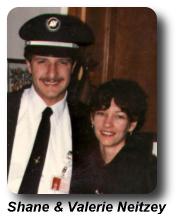
Bert Schmutzart flew his BS-1 glider for the first time at Warrenton. It was his own design, and he had built it in his townhouse. It had a high lift slow speed airfoil, which seems like a good idea for a glider, but apparently the wing started to lift before the elevator was effective, resulting in some initial take-off excitement. It also had flaps for landing, but the actuating mechanism was not as strong as it could be, and under air load the flaps would not deflect fully. The result was that first landing was l o o o o n g. Approach to landing on runway 4, past the not yet built hangars ~5' in the air, used the entire runway, turned left, and landed on runway 30. Bert took it home for more adjustments, and it worked better later. I don't know if he still has it or not. 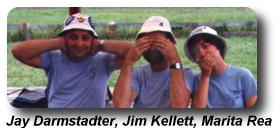
Not exactly kids, but several WSC pilots went on in later years to become flight instructors at other Clubs. Here are a couple. Hearing no Evil is Jay Darmstadter, in 2014 an active instructor at the Shenandoah Valley Soaring Club in Waynesboro, VA where he restored a Ka-6. I'm Seeing No Evil; Saying No Evil is Marita Rea who's a flight instructor at Tidewater Soaring. Marita's married to C.B. Umphlette, with whom she shares a 1-26. Both these instructors are regular participants in Vintage and Classic rallies.
There was a strong sense of community among the pilots who flew at WSC. In many ways, operations were more club-like than company-like. There was always a major spontaneous picnic every Saturday during the season, with as many as 50 or 75 participants.
Lots of pranks, too. There were two young men in the Dobbins family who learned to fly there; the father made a rash bet with one (John) that he (the student) couldn't accomplish some soaring milestone or another (I forget just what), or he (the father) would "kiss his ass". Well, John did it. So at the next Saturday picnic, John dropped his drawers in the middle of the runway and his father kissed his butt!
We also had lots of interesting staff. (Yes, staff - - because of an IRS ruling, we had to pay "employees" rather than just give them bartered use of the equipment.) I can remember getting "paychecks" for $10 or $15 for a month's work! Many were military officers on rotation to the Pentagon. A couple of notable employees were Marine Colonel (later General) Chuck Pittman, who led the ground forces in the attempted rescue of the hostages in Iran and Admiral George Strohsahl, who later was the head of the Point Mugu Missile Test facility in California. Towpilot George Watkins was the brother of Secretary of Energy Jim Watkins (under President Reagan). (George now runs an acro school in California.) Air Force Brig. General Dick Ault, who occasionally still tows for Skyline, was a very active towpilot at WSC (in addition to being an owner and officer of the company).
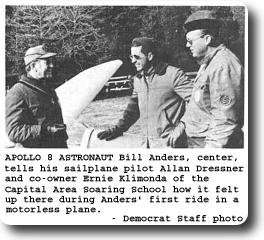
At least two astronauts flew with CASS/WSC. One was Major Tom Stafford, commander of the Apollo-Soyuz Mission, and the other was Bill Anders of Apollo 8, who was taken for his first glider flight by Al Dresner on December 11, 1969. The newspaper photo shows CASS co-owner Ernest Klimonda also. The article appeared on December 11, 1969.
Special Section, Newspaper article from December 11, 1969 [Go There Now]
One of the more painful incidents at Warrenton occurred on September 8, 1979 when William McClean died in a towplane while attempting to aerotow a glider out of the field immediately adjacent to the runway at the airpark. Several current Skyline members were present, including Bill Vickland who was flying the glider being towed. A group of pilots including Cecil Arnold, Jim Kellett, Al Dresner, and others later formed a 501(c)(3) Corporation, the William McClean Memorial Foundation, which was, for a while, actually on the Federal United Way Campaign donors list. The Foundation provided financial assistance to young people to learn to fly gliders. When the tax rules changed a few years later, the Foundation disbanded, turning over its assets to the Collegiate Soaring Association and the National Soaring Museum.
1991 was a dramatic and traumatic year for the Warrenton group. Having finally been convinced of the unsuitability of Warrenton Airpark, the Board reluctantly decided to move operations, and in January the Corporation was implementing its planned move to the Front Royal Airport.
However, in February, the stress of leading the company was causing a great deal of burnout among the Directors. Two working groups were established, one to research the disestablishment of the Corporation (which I chaired) and the other to research major changes in management, which would reduce the onerous workload on the Directors (which Phil Mouser chaired).
In March, the Board reconsidered its planned move and negotiations with IAD had led to agreements to operate our towplanes w/o transponders in the "veil". In April, the planned move to Front Royal had run into snags, and the operation continued at Warrenton Airpark. The Company also decided to hire a full time manager, and if none could be hired by May 1, that the Corporation with close its doors. By June, the last frantic efforts to save the Company had played out and the Board was committed to disestablishment.
The Corporation's Board continued throughout the remainder of 1991 and early 1992 to complete the disestablishment of the company and distribute the proceeds of all sales to the stockholders. The last meeting of the Board was on March 18, 1992.
Footnote: Warrenton Airpark, first established in 1937, continues to be an active airport. Now (2015) owned by Thomas Richards, it is the home of a very successful skydiving operation, and home to about 50 aircraft, mostly ultralights and parasails.
Note: There is an on-line collection of a couple hundred photos (some of which are shown in the article above) from this era - click HERE.
| Foreword, Acknowledgements, Introduction & Overview | Chapter I The Beginnings |
Chapter II Capitol Area Soaring School |
Chapter III Warrenton Soaring Center |
Chapter IV Skyline Soaring Club, New Market |
Chapter V Skyline Soaring Club, Front Royal |